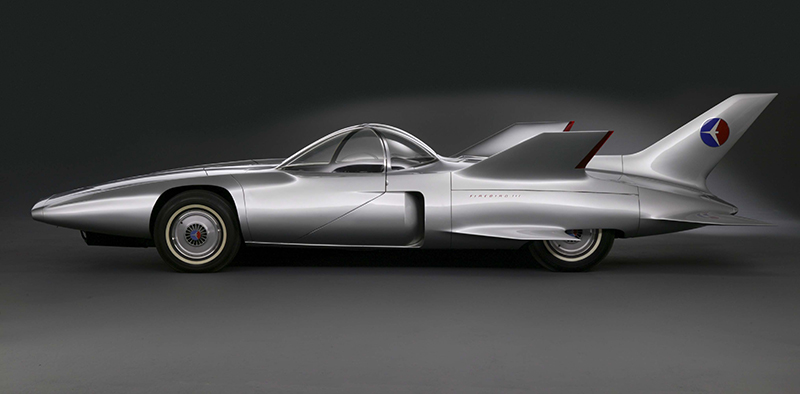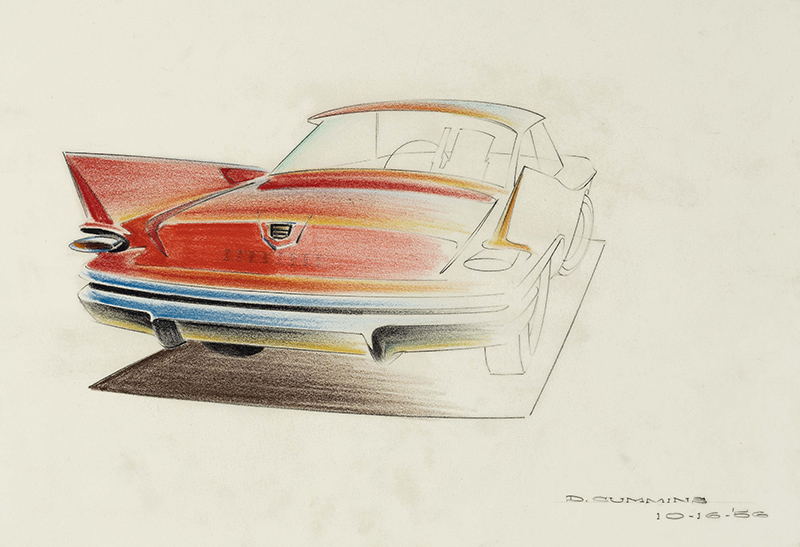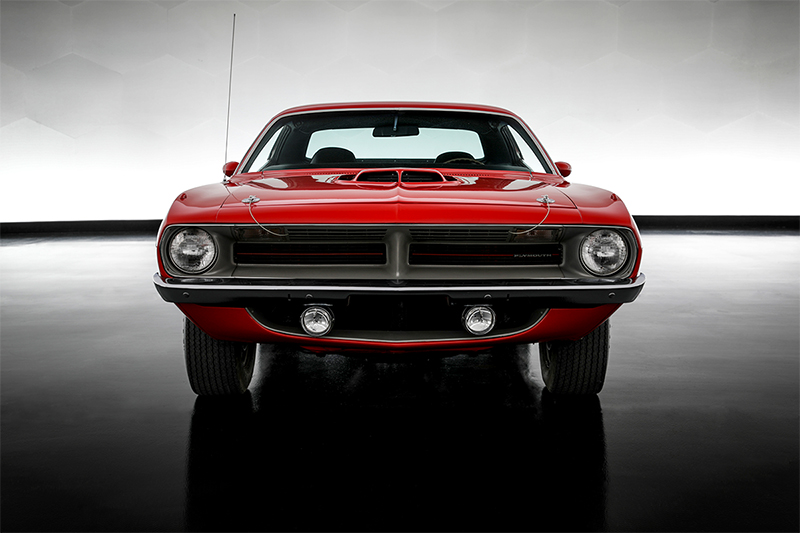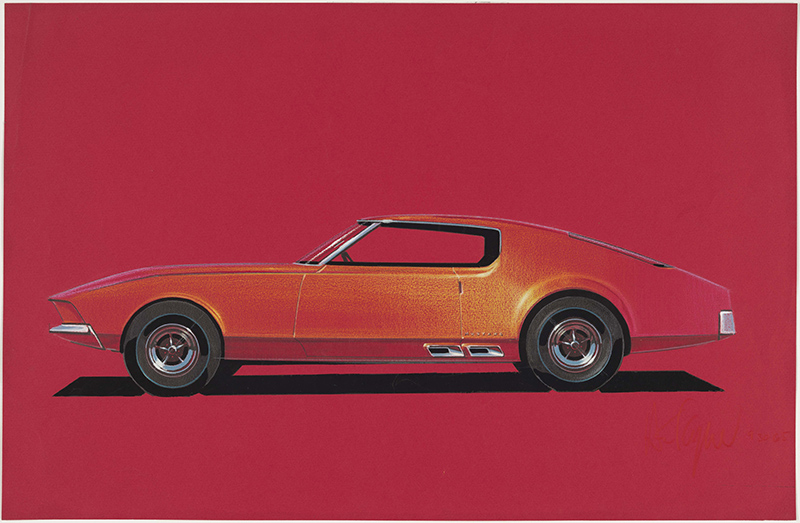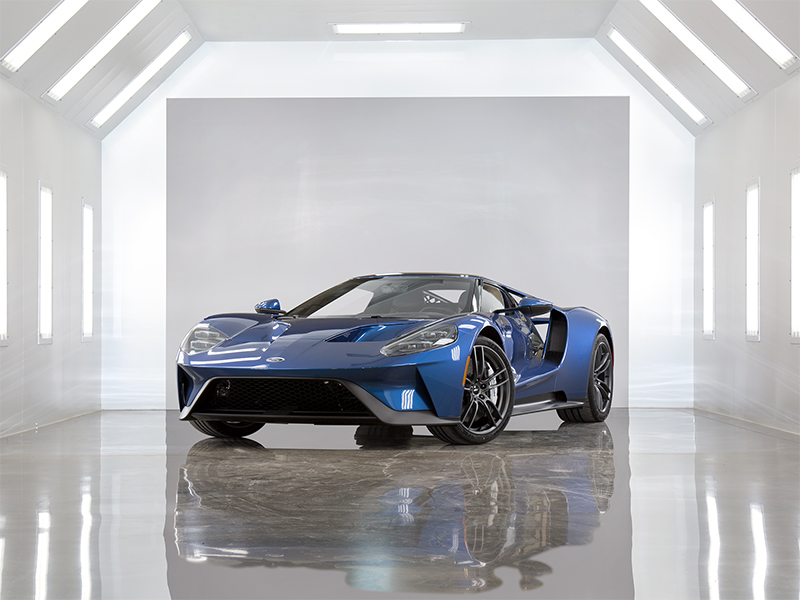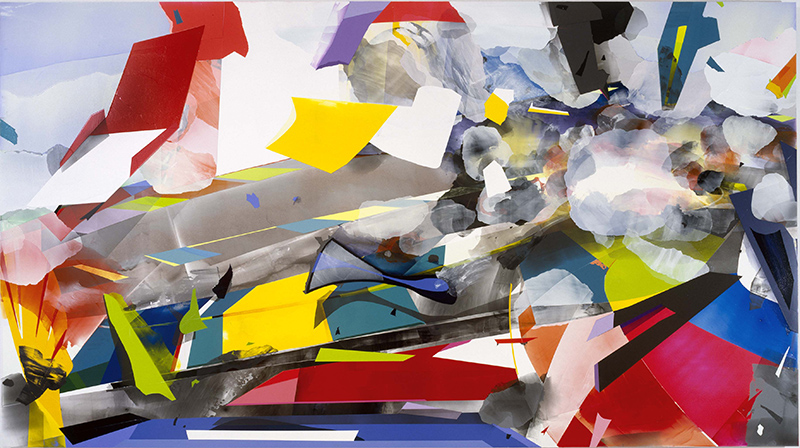Detroit Style: Car Design in the Motor City, 1950–2020
by Benjamin Colman
When Detroit became the center of the American automobile industry in the early 20th century, the city’s design studios began creating new ideas and styles that defined the modern car. On November 15, the Detroit Institute of Arts opened Detroit Style: Car Design in the Motor City, 1950–2020, a monumental exhibition celebrating an artform pioneered around its hometown. This exhibition is on view until June 27, 2021, and offers a close look at the art and artistry of car design.
Cars sit at the core of the exhibit, with twelve coupes and sedans created between 1950 and 2020 installed on the museum’s second floor. They include experimental show cars created for display and iconic production models sold to the mass market. These cars are reunited with rare surviving designer drawings and archival photographs, illustrating the distinctive practices of car design from paper on the drawing board, to large-scale wall drawing, to full-size clay model in the years leading up to factory production. A selection of paintings and sculptures illustrate the productive conversations between American artists and car culture during this period. Through these objects, the exhibit considers the ways Detroit designers navigated changes in tastes, culture, and technology across a 70-year span.
Detroit Style is organized into chronological groupings, exploring the defining styles of different eras. In the 1950s, for instance, motifs adapted from airplanes and speculative space age forms echo a technological optimism in popular culture. At General Motors under the leadership of designer Harley Earl, experimental cars from this period include the turbine-powered 1958 Firebird III (figure 1) with towering fins and bubbles over the cabin. This car made its futuristic debut at the Waldorf Astoria in New York in the 1958 Motorama show, almost precisely one year after the Soviet satellite Sputnik I began orbiting the earth.
The theatrical motifs of experimental show cars were modified as designers incorporated select elements into production models. A 1956 drawing by designer Dave Cummins for the 1960 model year Chrysler (figure 2) shows rear fins brought down to earth as part of a vocabulary dubbed “The Forward Look” by designer Virgil Exner.
As the cultural atmosphere changed, car designers invented new models to capture the prevailing mood of their day. If the glittering family sedans of the 1950s look to the sky with an optimistic eye, designers sculpted the taught surfaces and dramatic proportions of prowling muscle cars to highlight horsepower in the 1960s and 1970s. So-called “pony cars” like Plymouth’s 1970 Barracuda (figure 3) conjured dreams of speed. This genre of sporty car spawned by the successful introduction of Ford’s Mustang (figure 4) had a distinctive form with a long hood and short rear deck that focused attention on a roaring engine. They were introduced at modest prices to appeal to young drivers. As youth culture became a dominant voice in American culture, Detroit’s designers created cars appealing to young eyes. The evocative muscle cars and pony cars of this period are global icons of American design, defining for a generation the attitude and style of American automobiles.
Many contemporary designers are inspired by automotive history. In 1966, against a backdrop of fierce competition with Enzo Ferrari, three teams driving the new Ford GT40 MK won first, second, and third place in the 24 Hours of Le Mans race in France. This was a landmark victory for an American car company. Designers for the 2017 Ford GT (figure 5) reinterpreted that 1966 form while experimenting with radical, aerodynamic elements for this updated supercar. Its sleek surfaces highlight the appeal of high-speed racing in the popular imagination. This lingering allure echoes also in Kristin Baker’s 2003 painting The Unfair Advantage (figure 6), which captures the spectacle, danger, and sensations of a high-speed racetrack.
This is the first time cars have been on view in the Detroit Institute of Arts since 1985. In the intervening 35 years, museums around the world have embraced mid-20th-century American design by Detroit-trained designers like Ray and Charles Eames, Florence Knoll, and Eero Saarinen. Despite the omnipresence of automobiles in American life, the individuals who created their forms have not received the same level of popular recognition as that peer group of industrial designers and architects. Detroit Style: Car Design in the Motor City, 1950-2020 aims to rectify that imbalance by celebrating the work and style of a diverse group of influential practitioners spanning several generations.
Benjamin Colman is an Associate Curator of American Art at the Detroit Institute of Arts.
A print version of this article was published in The Magazine of the Decorative Arts Trust, one of our most popular member benefits. Join today!

